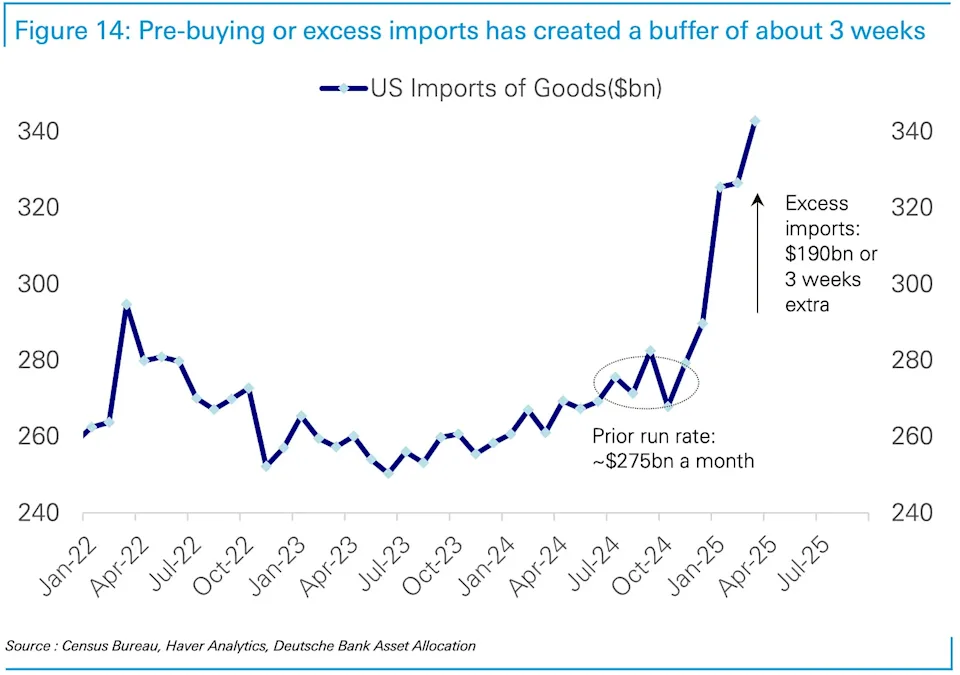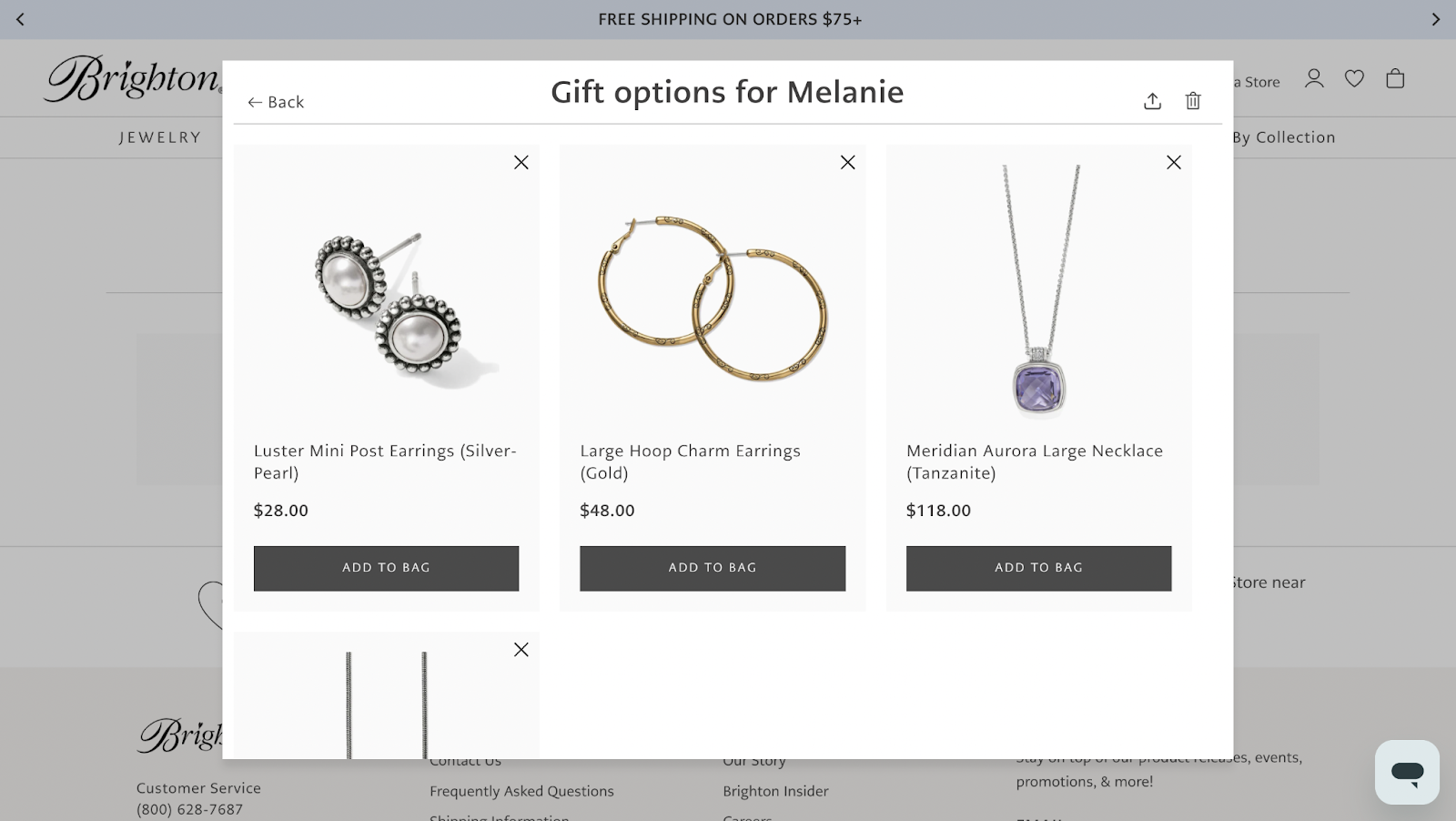Learn how ecommerce brands can use wishlists and back-in-stock alerts to forecast smarter and stay ahead of tariffs and rising costs.

Ecommerce logistics have been in a state of flux over the past few years. Global supply chain issues, labor shortages, and volatile freight costs have kept businesses on their toes. With tariffs back in the spotlight, businesses must adapt to yet another shifting variable.
But how do you keep a pulse on what customers actually want and use that intel to make smarter inventory decisions? First-party data from wishlists and back-in-stock alerts can be a game-changer, especially when predictability feels like a luxury. In this article, we’ll break down how these tools help you stay ahead in a volatile landscape. Let’s dive in.
In 2025, President Trump’s tariff policies have significantly reshaped global trade dynamics. In April, he introduced a universal 10% tariff on most imports, with higher rates for specific countries, notably imposing up to 145% on Chinese goods. These measures aimed to address trade imbalances and bolster domestic manufacturing.
However, they have led to increased costs for businesses and consumers, supply chain disruptions, and retaliatory tariffs from key trading partners like China, which responded with tariffs as high as 125% on U.S. goods.
In a move aimed at easing trade tensions, the United States and China have agreed to a 90-day tariff ceasefire, easing import levies and offering temporary relief for global supply chains ahead of the back-to-school and holiday shopping seasons. As part of the agreement, the U.S. will reduce its tariffs on Chinese goods from 145% to 30%, while China will lower its tariffs from 125% to 10%. This move is expected to alleviate some of the pressure on ecommerce retailers and manufacturers during a critical sales period.
However, the economic uncertainty has affected corporate planning and market stability, with some companies halting investments and raising prices to offset increased costs. And in the middle of all this chaos, one thing becomes painfully clear: if you can’t predict your inventory, you risk being left behind.
The tariffs have already influenced customer behavior. According to eMarketer, 46% of consumers are already bracing for higher prices on fashion and clothing thanks to tariffs, and over half say they’d switch brands in a heartbeat if the price was right. In other words, loyalty is fragile, and price sensitivity is peaking.

Meanwhile, U.S. imports have spiked as companies rush to stock up before tariffs hit even harder. This inventory hoarding might offer short-term relief, but it also creates long-term risk: overstocking, tied-up cash, and risk of future markdown if demand doesn’t show up.
At the same time, logistics teams are scrambling to rethink sourcing and fulfillment strategies, chasing cheaper suppliers, faster lanes, or anything else that keeps margins intact. In this environment, predictability becomes power. The brands that can accurately forecast demand by tuning into real customer behavior will stay leaner, move faster, and make smarter bets.
That means listening more closely than ever. Features like wishlists and back-in-stock alerts will become critical inputs for smarter forecasting and more agile inventory management. Thus far, Swym has helped merchants analyze 100s of millions of wishlist actions, helping brands better understand which products are in demand year-round.
“Tariffs are the new weather: unpredictable and unavoidable. Smart merchants are extending lead times, diversifying suppliers, reshoring where practical, and treating inventory like cash. That is the back of the house. Up front, if you are not optimizing for retention, you will feel every cost increase twice... once at the port and again when you pay to reacquire the same customer.”
– Kurt Elster, Shopify expert & host of The Unofficial Shopify Podcast
In today’s unpredictable economy, where shipping delays and tariff curveballs are part of the new normal, brands need every edge they can get. Enter: wishlists and back-in-stock alerts. These sources of first-party data can significantly improve forecasting. Here’s how they help you stay ahead:
Forecast smarter - Wishlist activity is like a sneak peek into your customers’ shopping brains. When a product starts getting added to wishlists before it's flying off the shelves, that’s an early indicator of demand, even before the purchase data rolls in. Brands can use this to refine demand forecasts, adjust inventory orders, and avoid getting caught flat-footed when interest spikes.
“Tariffs exacerbate existing supply chain issues; to say nothing of the natural volatility of trying to forecast a business at an early stage. In my view, supply chains are the single most under-optimized part of DTC brands' operations right now, and that's actually good news: it means there are lots of low-hanging fruit and there is more and better content being created to help them on this all the time."
-Andrew Faris, Ecommerce Growth Expert
Reduce overstocking - If a product is just sitting there collecting digital (or actual) dust, barely added to wishlists or back-in-stock requests, that’s a red flag. By analyzing low-engagement items in wishlists or minimal demand signals, you can avoid overstocking products that aren't resonating with shoppers. Less excess inventory means fewer clearance sales impacting your margins.
Align promotions with what shoppers actually want - Instead of guessing what to discount, let your customers tell you. High-frequency wishlist items are basically pre-qualified hits, which means marketing can focus the budget on products that already have built-in demand. Especially heading into big sales periods like back-to-school or holidays, this kind of alignment can seriously boost conversion rates and ROI.
Brighton, a leading manufacturer, retailer, and wholesaler of jewelry, handbags, American-made leather goods, and accessories, has witnessed firsthand the power of wishlists and back-in-stock alerts. The brand is committed to delivering a delightful shopping experience online and in-store.
They were looking for ways to create the same sense of ease and exclusivity on the website as they do in-store. To achieve this, Brighton implemented:

The results speak for themselves. Brighton customers using Wishlist Plus have a 34% higher AOV than customers who do not yet use this feature. Moreover, back-in-stock alerts consistently recover thousands in lost sales. The best part? Back-in-stock intelligence also helps with inventory planning: Brighton can see which products are most sought-after and replenish accordingly.
First-party data gives you direct, permission-based insight into what your customers want, when they want it, and how they behave across their journey. It’s more accurate, more timely, and most importantly, you own it. In a world where agility is everything, owning that data gives you the power to respond faster, forecast better, and build loyalty through personalized experiences that actually hit the mark.
You can’t also ignore the fact that tariffs will indirectly influence customer acquisition costs. Higher product prices due to tariffs mean more friction at the point of sale. And that means you have to spend more to convince the same customer to buy. Once again, customer data can help. You’ll know more about shopping preferences and intent, which will help you target your marketing campaigns to reduce CAC.
If there’s one thing tariffs made clear it’s the fact that your inventory strategy must include intent data. Brands that rely solely on historical sales data or gut instincts are faced with the risk in the form of overstocked shelves, missed demand spikes, and razor-thin margins. To stay ahead, you need visibility into what customers actually want before the transaction happens. And that means leaning hard into first-party data.
Swym gives you access to the kind of first-party data that actually moves the needle. It’s not just about seeing what customers did, it’s about spotting what they want before they buy, so you can stock with confidence, cut down on waste, and adapt in real time.
Want to stop reacting and start predicting? Get a demo and see how Swym can help you turn intent into impact.
Swym Wishlist Plus lets shoppers save products they love, ensuring valuable customer intent is never lost and ready to convert.